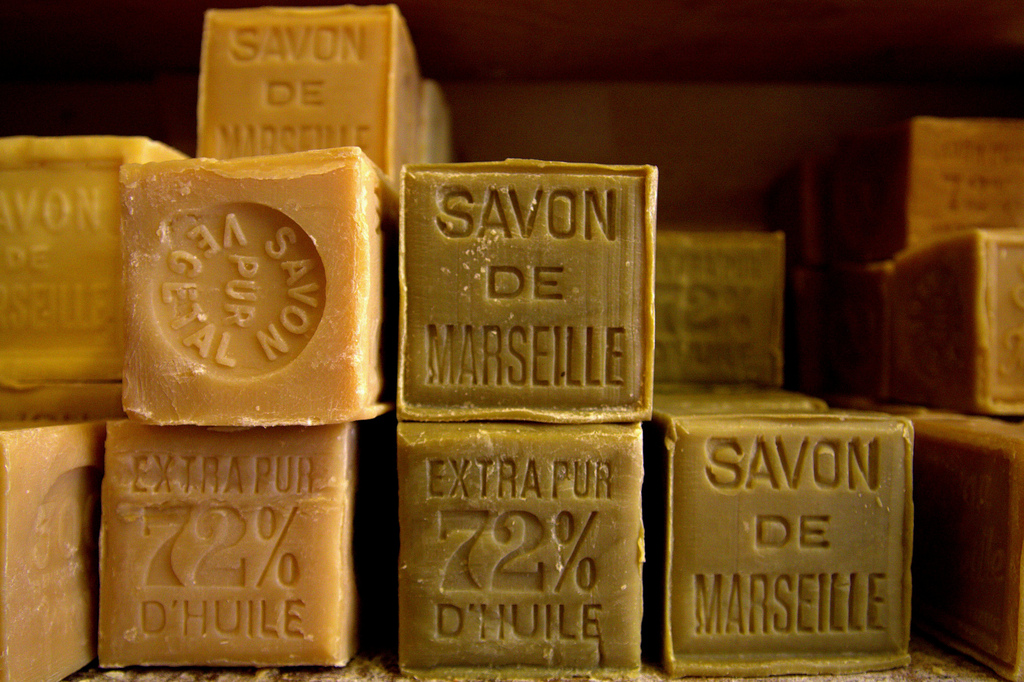 Have you ever heard of Savon de Marseille? Blocks of this special soap have been made in the South of France since 1370, when the first soapmaker is documented in Marseille. Louis XIV passed a law in 1688 stipulating that only soaps made in and around Marseille could use the name Savon de Marseille. One of the main qualifications of Savon de Marseilles is that it must be 72% olive oil. True Castile soaps are 100% olive oil (which is why it bothers me that Dr. Bonner’s bills itself as Castile when it’s not even mostly olive oil), but many soapmakers prefer to add additional oils, especially coconut oil, so that the soap will have a bubbly lather. The resulting soap is often called “Bastile.” Olive oil makes for small, flat bubbles, but adding a bit of coconut oil makes for a fairly nice soap.
Have you ever heard of Savon de Marseille? Blocks of this special soap have been made in the South of France since 1370, when the first soapmaker is documented in Marseille. Louis XIV passed a law in 1688 stipulating that only soaps made in and around Marseille could use the name Savon de Marseille. One of the main qualifications of Savon de Marseilles is that it must be 72% olive oil. True Castile soaps are 100% olive oil (which is why it bothers me that Dr. Bonner’s bills itself as Castile when it’s not even mostly olive oil), but many soapmakers prefer to add additional oils, especially coconut oil, so that the soap will have a bubbly lather. The resulting soap is often called “Bastile.” Olive oil makes for small, flat bubbles, but adding a bit of coconut oil makes for a fairly nice soap.
Savon de Marseille is made with water from the Mediterranean Sea, olive oil, and a mixture of other vegetable oils that varies according to the maker’s preferences. Most often, soapmakers use palm or a mixture of palm and coconut oils. It is traditionally unscented, but you may be able to find some scented versions. It is cut in blocks of about 300 grams and stamped as you see in the example above.
I was recently asked if I made any lavender soap. I haven’t yet. I did add some lavender essential oil to the first batch I made, but I was inexperienced at the time, and I didn’t realize I would have needed to have added quite a lot more lavender oil for the fragrance to survive the saponification process. I have decided to create a Marseille-style soap with French green clay and lavender oil. I won’t have the materials to make it until after the new year begins, most likely, but I’ll keep you posted about how it turns out.
If you are a soapmaker, are there any traditional types of soap you’re anxious to try (Castile, Aleppo, something similar)? If you are a fan of homemade soap, which traditional types of soap do you like best?
